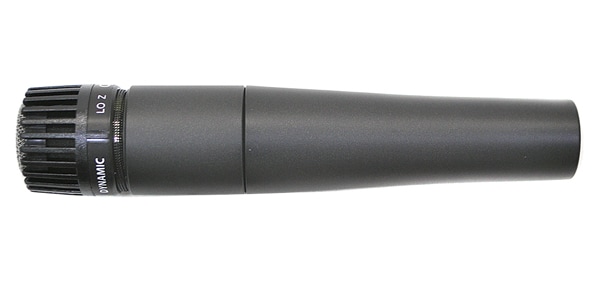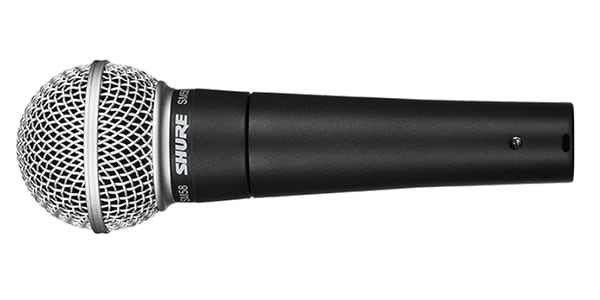
Introduction
Nice to meet you, my name is Araki.
I am a father working a part-time job, who also creates manga and writes music.
I used to work as a sound engineer locally for about 7 years.
I met many kinds of people, both professional and amateur, so I had various experiences in many fields,
planning events such as Enka concerts, band performances, summer festivals, karaoke competitions, weddings, government events, evacuation drills, elementary school athletic meets, and so on.
Now, I have a job as a music writer thanks to these experiences.
This time, I would like to share an “audio tip” based on my experiences.
To be honest, I didn't go to a music school, so I don’t have expert knowledge. Sorry if you were expecting a tip about frequency characteristics or delay times.
However, I would like to talk about just one small technique.
Actually, it's not a technique. It's difficult to explain, but I think "tip" is the best word.
This is for those who are looking for information about audio tips for outdoor applications.
There is quite a lot of information about home & studio recording on the Internet, but there are few how-to articles on audio tips for outdoor applications. You could read all of these articles in one day. I hope this article helps someone even a little.
The "SM58" a classic vocal microphone
I would like to write about the SM58, also mentioned in the title.
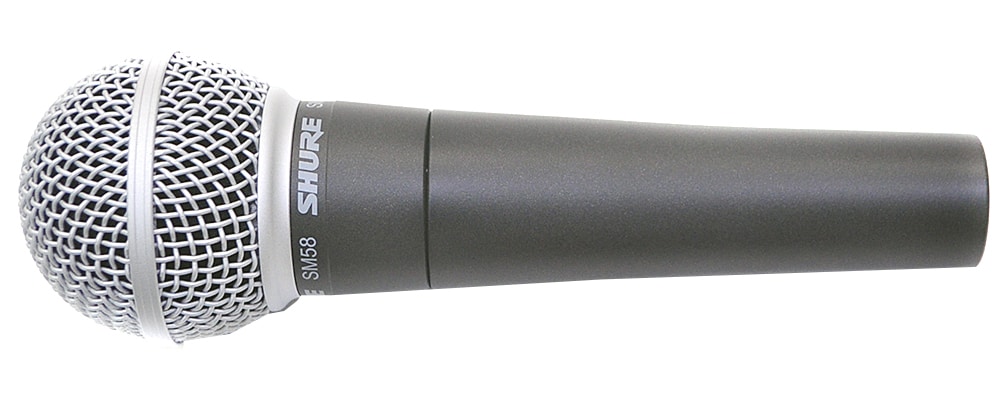
There are too many kinds of mics.
If you open the microphone category on the Sound House website, it looks like there are about 2500 types are being sold.
However, the number of microphones used for PA applications is smaller.
And among them, one of the most famous, classic, and universally praised mics is the SHURE SM58.
You can find it everywhere in music-related places, such as a music company warehouses, recording studios, rehearsal studios, or live houses. In fact, I've never heard of a music-related place where they don’t have one. If you don't have one, I think you're really particular about what microphones you use.
It is also known in Japanese in variations of the “58” in the name, as "goppa", "goppachi", "gohachi", and so on in the industry. Try to use these words if you want to be an engineer, and you can enjoy the feeling as if you are already one.
The mic is very durable. It hardly ever breaks even if you drop it. Also it is easy to maintain. The mic gets smelly due to spittle if you use it too long. In such a case, you can remove the mic grill and wash it.
By the way, along with the SM58, the SM57, also known as "Gonana", is also popular. It's from the same manufacturer, SHURE. It's like a version of the SM58 without a grill. The SM58 is often used for vocals, and the SM57 is often used for musical instruments.
With switch or without switch
This is a bit off topic, but in general, microphones used by professionals often do not have switches.
Why not?
To avoid accidents.
For example, have you ever encountered a situation where your school principal stood in front of a microphone at a school meeting and started to speak with a bow? Then, a little embarrassed, he laughs, and turns on the microphone. That's right. This can happen if the microphone has a switch.
The person who was using the microphone previously turned off the switch, and the next person started talking without noticing it. That's why there is no sound from the speakers.
I think karaoke is where you use microphones most.
Karaoke microphones usually have a switch, and when you finish singing, you switch it off.
It wouldn’t be a big problem if it happens in a school meeting or karaoke, but what if it was your favorite musician’s first song at a live performance? It would be very disappointing.
A microphone without a switch is used to avoid such troubles3
Benefits of the SM58 switch
There are two types of SM58. One has a switch and the other does not.
As mentioned above, generally, people who work at professional sites usually use a mic with no switch.
However, when I was an engineer, I was using an SM58 with a switch.
The reason lead to the theme of this "audio tip".
I used to go to the site by myself. Due to the circumstances of the company, it was difficult to gather a lot of manpower.
Sometimes, I had to do all the settings from set up to removal all by myself. Though I liked the job, it was very tough.
If you imagine operating at a restaurant by yourself, you may be able to understand how tough it is.
For professional applications, you have a stage and a PA booth. I used to be in the PA booth all by myself, operating the mixer, etc. When you wanted to go to the restroom was the most difficult situation. You can't leave the booth. So, during a short break or between performances, you finally have a chance to run to the restroom.
But what if I leave the booth with the mic muted on the mixer, and someone wants to make an announcement?
The mixer has many knobs and it’s difficult to use if you are not familiar with it. Especially if it's a digital mixer, it is even more difficult.
The switch is useful in such a situation. You don’t have to mute the mic on the mixer, and use the switch on the microphone to turn it off and on.
When I leave the booth, I always tell the person in charge to turn on the microphone switch on if he would like to make an announcement.
It is much easier to understand than saying "press this button on the mixer ...".
In this way, a microphone with a switch can be useful in some cases.
A useful function on the SM58 with a switch
Here is a useful feature on the SM58 with a switch.
Though I wrote that people in the profession usually use microphones without switch, I used a mic with a switch. However, there were situations when I wanted to use a mic without a switch.
In these situations, someone might hit the microphone and accidentally turn off.
I could not blame the person who accidentally hit the microphone, so I had to do something to prevent this kind of accident.
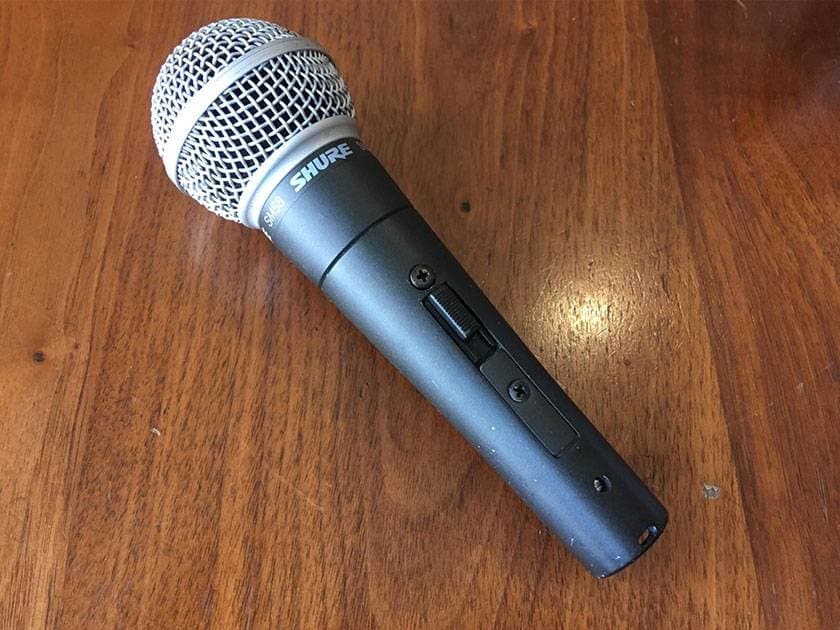
This is the SM58 with a switch.
You can see the switch on the body.
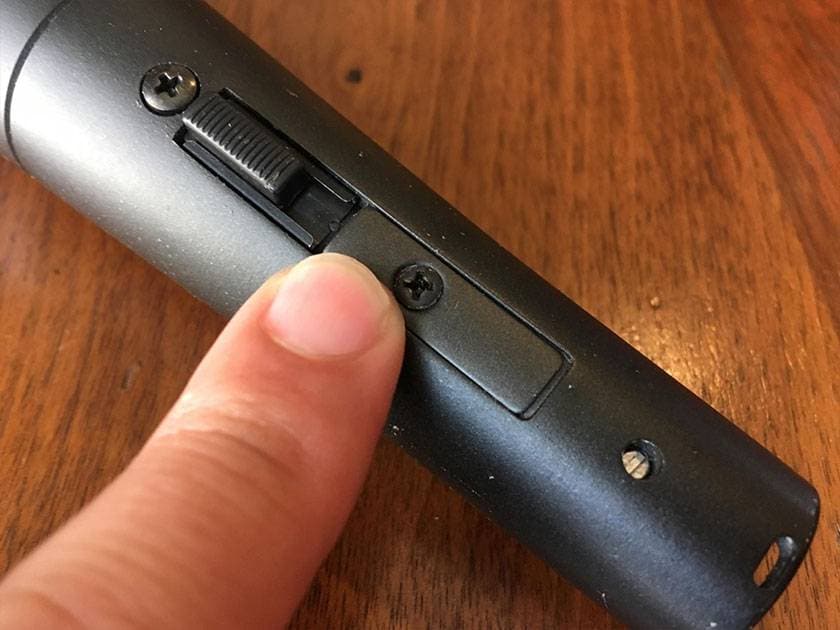
Here is where the useful function is at.
This metal plate is attached with a screw.
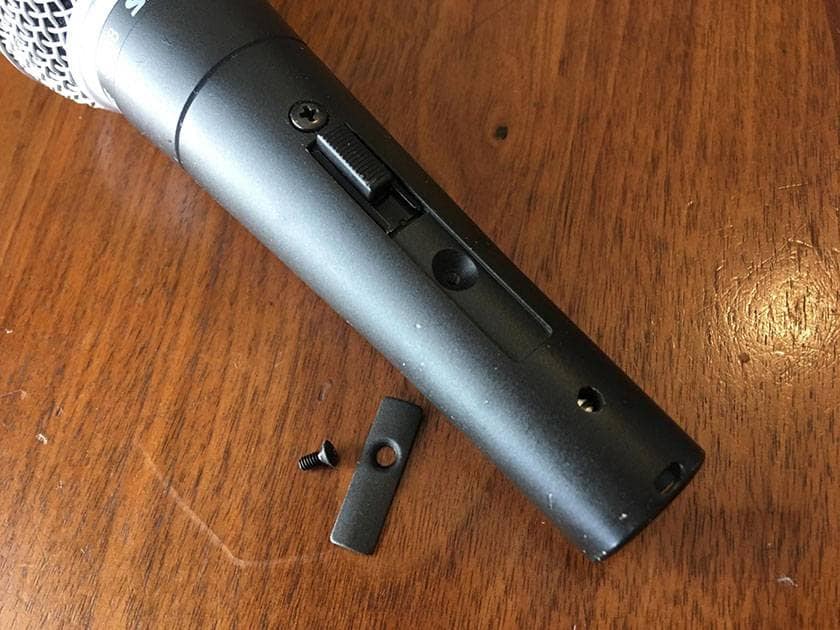
The screw can be easily removed with a screwdriver.
If you look at the plate closely, the screw hole is slightly off center,
and this is the important point.
The switch usually moves up and down. However, if you remove the plate once and re-install it upside down,
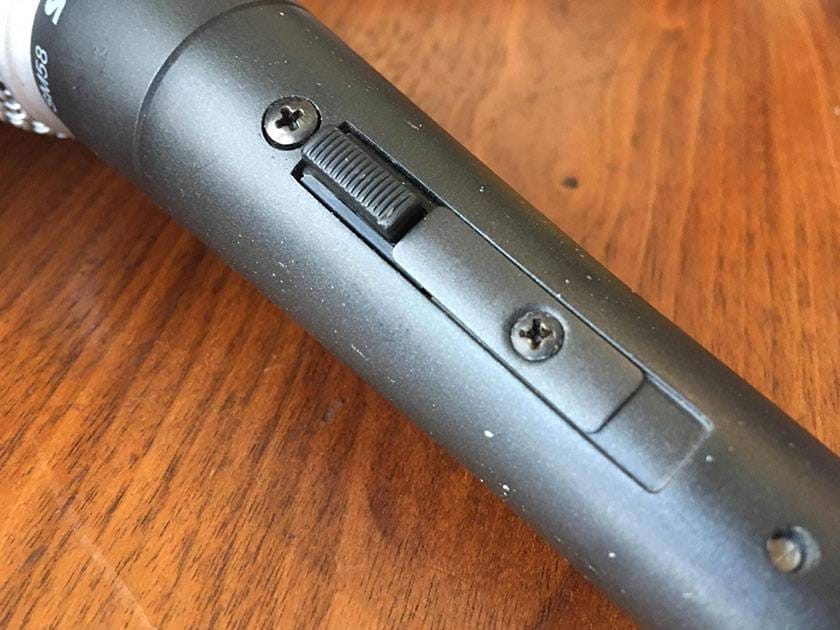
Then, the plate becomes a stopper, and the switch can be fixed in the ON position.
This way the switch cannot be turned off.
In conclusion
The prices of the SM58 with a switch and without a switch are actually the same.
そしてThe SM58 with a switch can be turned into the SM58 without a switch.。
Don’t you think it is better to have the SM58 with a switch...?
Would you like to have a switch...? I prefer the one with a switch. How about you...? I think we can get along, yes?
Well, putting all else aside, that’s it for now.
I will introduce other tips at the next opportunity.
I hope my tip helps you even a little.






